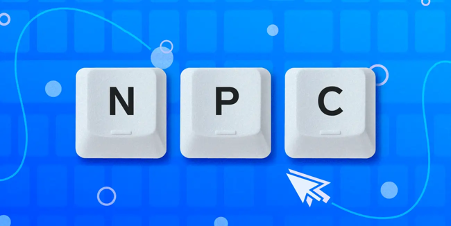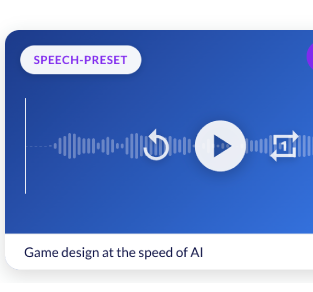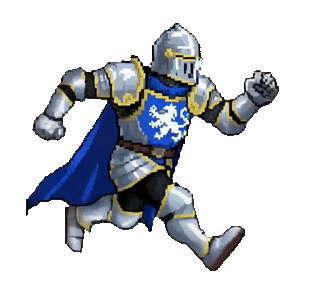
A guide to advancements in NPCs (Non-Player Characters), creating the perfect NPC using the latest innovations, and why background mechanics are becoming more important than ever
Over the last 10 years, advancements in gaming technology have accelerated at an incredible rate. The advent of increasingly powerful gaming systems has meant studios have begun to utilise these more sophisticated technologies in the development of their games. As a result, game mechanics (often considered the most crucial element of any successful game) has experienced a seismic leap forward. Sprawling open worlds have become a staple for many elite gaming studios. Environments are more detailed and allow for conditions to alter depending on the weather at certain points in the game. Combat and stealth mechanics have become more intuitive, with studios constantly striving to one-up each other on who can present the most innovative ways their characters compete in-game.
This blog, however, will analyse what is becoming a more and more important element of any successful game’s core mechanics – the NPCs. It will outline why NPCs are important within a game, before discussing the latest innovations in NPCs and ultimately how to create the perfect NPC using these new innovations, with a particular focus on a game’s background mechanics. Finally, this blog will set out which games have led the way in creative NPCs, and how Ludo, the fully integrated creativity toolkit for game developers, can help anyone looking to perfect the art of the NPC.
Why are NPCs important within a game?
NPCs, or Non-Player Characters, are defined as characters that cannot be controlled by the player, nor any form of AI, but that the playable character can meet and at times interact with throughout a particular game. Whilst many may believe that NPCs are a recent phenomenon in the world of gaming, the truth is that they have been around ever since the first games were created. In the strictest sense, any villain or enemy a gamer has ever fought against is, fundamentally, an NPC. The likes of Space Invaders and Tutor’s 1975 classic dnd, based on the popular table-top game Dungeons & Dragons, contained the first ever traditional enemies within a game, and these enemies can ultimately be considered among the first NPCs to ever appear in a video game as they didn’t utilise any form of AI. These NPCs were important for two very core reasons. They added to the overall aesthetic of the game, diversifying the visuals by presenting a variety of different alternative characters for the gamer to defeat, whilst also forming the building blocks of the game’s overall narrative.
It is important to state that modern NPCs are important to contemporary gaming titles for very similar reasons. Technology may have moved on immeasurably and mechanics may have become more sophisticated, but ultimately NPCs are still invaluable to both the visuals and the narrative of any successful game. Where modern NPCs are considerably different, however, is in the way they interact both with each other and the central playable character of the game and also in how they now have their own unique background mechanics.
Latest innovations in NPCs
As games have evolved, so have the NPCs within them. Gone are the days where NPCs would appear as lifeless, undetailed caricatures in the background of levels that followed a linear structure. Nowadays, studios are using NPCs to add texture and atmosphere to their detailed gaming environments. One key innovation in the world of NPCs is that they now increasingly have their own game mechanics. NPCs within a particular location may now move and speak differently to NPCs from other areas of the game. Each may also have its own specific aesthetic depending on the environment they find themselves in, and advancements in face mapping technology mean that some if not all NPCs within a game may also present their own unique facial features and expressions, allowing them to respond to events in-game in real time.
These innovations have led to developments in how studios can utilise their increasingly diverse and complex NPCs. Open-world RPGs now regularly contain a wide array of side quests led by fully realised and animated NPCs who have become, at times, some of the more memorable characters for players. Advancements in NPC AI have allowed sports games such as EA’s FIFA and F1 franchises and 2K’s NBA and WWE series’ to feature more intuitive and competitive gameplay when played locally, making the experience feel more authentic. There has also been a renaissance of decision-based games, where the player is regularly faced with a series of questions to answer and decisions to make, which are often NPC led and ultimately affect the outcome of the game.
Which games have led the way in innovative NPCs?
There are a number of titles that fall into the above genres that are seen as having led the way in developing and presenting innovative NPCs. Projekt Red’s 2015 masterpiece The Witcher 3: The Wild Hunt is often recognised as the gold standard when it comes to rich and dynamic NPCs. This is due in no small part to the incredible arsenal of side quests the game contains, all of which are led and contributed to by an incredibly detailed list of fully realised NPCs. Other RPGs that have led the way when it comes to utilising these latest innovations in background mechanics include the likes of Naughty Dog’s The Last of Us series, both parts 1 and 2, and Rockstar Games, who certainly have a considerable claim to be among the founding members of the modern NPC wave given the extraordinary work done in this area on the likes of GTA5 and Red Dead Redemption 2 to name only two.
EA and 2K’s use of NPCs in their sports titles has already been mentioned, but it is the decision-based genre mentioned above where it has been argued modern innovative NPCs really come to the fore. A standout of recent times has been French developer Quantic Dream’s 2018 hit Detroit: Become Human, which featured a truly extraordinary storyline with three central playable characters all of whom could interact seamlessly with NPCs around them to discover clues, advance their own narratives, and make key decisions about the direction the game would ultimately take. Other notable titles in this genre that make excellent use of NPC innovations include BioWare’s Mass Effect 2 and Bethesda’s Elder Scrolls series, both of which while not technically decision-based games at their core, do include elements that allow them to form part of this particular genre.
How to create the perfect NPC using the latest innovations in game mechanics
A good NPC can be said to require any one of these core elements – a purpose, a unique quirk or trait, and something they can offer the central character throughout the game.
As with any background element within a game, an NPC needs a reason to be there, however small. NPCs in Ubisoft’s Assassin’s Creed series can often be seen working on market stalls, adding to the overall feel of the environment whilst also offering the player dynamic stealth opportunities. This is just one of an infinite number of examples, while others include soldiers that guard restricted areas, referees who make decisions in-game, or animals that may either hunt or be hunted. Each of these NPCs crucially requires its own unique background mechanics. While not as sophisticated as the mechanics present in central playable characters, innovations in background mechanics mean studios are now able to develop NPCs that have a rich and complex life of their own.
The second and third of these core elements often go hand-in-hand. When looking to develop an NPC for an important level or quest, studios should look to give it a unique trait that draws the player in and makes it memorable. This trait can be physical or vocal but is also often something which it is able to offer the central character in the form of a reward. These rewards are either earned through the completion of quests alongside these NPCs or acquired by interacting with NPCs acting as shopkeepers or vendors in certain games. Innovations in mechanics mean these rewards can be physically handed to the central character, meaning they ultimately have a significant impact on the playability of the game.
How Ludo can help inspire exciting new NPCs!
Ludo, the complete creativity toolkit for developers powered by AI and machine learning, can help inspire you to create innovative NPCs and other game mechanics for your next game. The new Game Elements feature joins an already sizable toolkit and has markedly improved the usability and efficiency of the platform. Developers can simply input a description of their game concept, or start from an already generated idea, and Ludo will quickly suggest hundreds of ideas for mechanics, central characters, NPCs and many more at the click of a button. It’s as easy as that!
Try Ludo now!
There has never been a better time to try Ludo. The all new, one-of-a-kind Game Concept creator containing all of the platform’s tools in one place can streamline the game creation process for developers across the industry, and with its brand new Free Tier subscription these and other features are now available to all.
If you’re a new developer about to embark on your next game development journey, make sure to make Ludo a part of it!
Want to learn more about game design? Check out our blogs on the importance of artwork and the importance of game mechanics, sign up to Ludo now!




